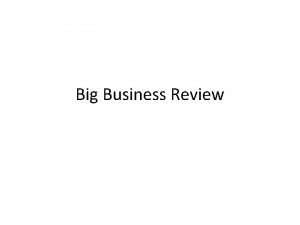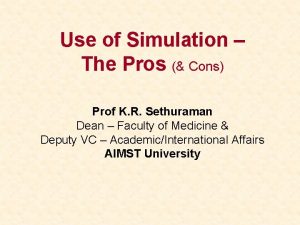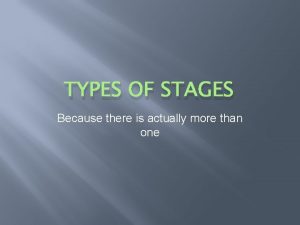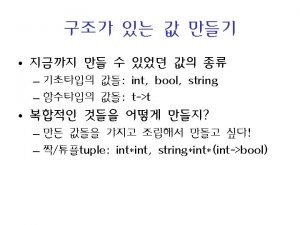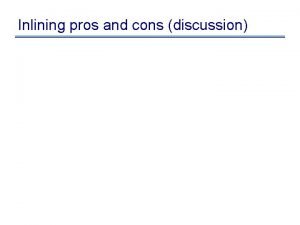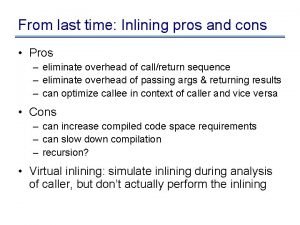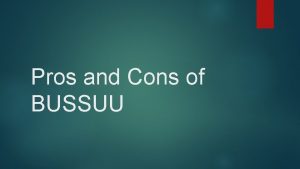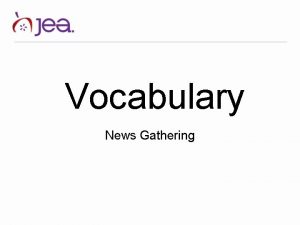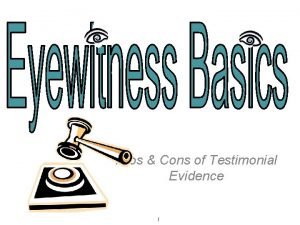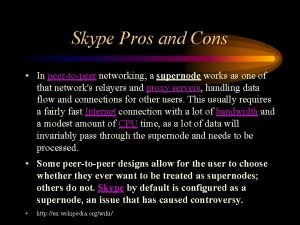News Feed Defenders A Pros Cons Getting Your



























- Slides: 27

News. Feed Defenders

A. Pros & Cons: Getting Your News On SM

B. Making the Most of It

C. What Makes News… News?

C. What Makes News… News? Accuracy. News stories should provide accurate and verifiable information. Sources should be credited and sited. Beware of quotes without attributions, facts you can't verify with a quick internet search, and claims that have no proof.

C. What Makes News… News? Transparency. Content must clearly communicate its purpose, especially when it’s not a news article. Don't be fooled by sneaky ads, quizzes that just mine for your personal information, or opinion pieces pretending to fair and balanced reporting.

C. What Makes News… News? Trustworthiness. It’s important to know the source of what you read. Make sure the source is legitimate, whether a reliable network or expert. Deception can come in many forms. False sources, experts, and even institutions can be used to gain your trust.

C. What Makes News… News? Impartiality. News stories should not show bias in the coverage of an event or topic. If there are multiple sides to a story, they should be provided. Only telling one side of a story is one way people try to mislead. Good opinion pieces give you both sides, then argue for one or the other.


D. But wait…there’s more! Unfortunately. Beware of Bots • Bots are algorithms (computer code) acting in social media networks. But to us, they look like a real user. • They can act as users by liking, friending, following, posting, and commenting based on code that people write. • Bots can be designed to carry on chat conversations, and engage with other human users without them even knowing. • The also can be used to follow your actions online, and suggest things (products, services, content) based on your behaviors. How might this impact what you see on SM?

D. But wait…there’s more! Unfortunately. When Bots Attack: Fake Fame • You can buy followers, rather than work to earn them. One young entrepreneur purchased 50, 000 Twitter followers to make his young social media consulting company look like it was famous and successful. • It won him some additional attention and even some business because people believed he had a large and influential following. • Most of the followers were bots and faded away after his purchase expired. He had to then explain his new “unpopularity” to clients. It’s also a federal offense in his business.

D. But Wait…There’s More! Unfortunately. When Bots Attack: The Opinion Armies • Armies of bots can be coded to read and engage with SM content on a particular topic like an upcoming election, or climate change, or other important issues. • Pushing these armies to support or oppose something or someone in big enough numbers can change what is considered “trending”. And things that are trending (even if untrue) can get picked up by other news outlets. • Bully bots can be used to get into online confrontation, stirring up anger and contention between two opinions on an issue—even when one side is just a code!

D. But Wait…There’s More! Unfortunately. When Bots Attack: The Opinion Armies “Bots allow groups to speak much more loudly than they would be able to on any other social media platform — it lets them use Twitter as a megaphone, ” said Samuel Woolley, the director for research at Oxford University’s Computational Propaganda Project. “It’s doing something that I call ‘manufacturing consensus, ’ or building the illusion of popularity for a candidate or a particular idea. ”

D. But Wait…There’s More! Unfortunately. When Bots Attack: How to Spot a Bot • Bots are lonely. They will have few “friends” on the SM platform. • They post A LOT. If you see a regular timed series of posts over a long period of time, or a huge bust of posts it may be a bot. Humans have to sleep! • They use hash tags heavily to increase the likelihood their posts will be seen. • They use “spam words” that work to get you to click on links within a post. (ex: deals, debt, dating) • They have a blacklisted (hidden) URL.

D. But Wait…There’s More! Unfortunately. Mirror Sites • It’s not very hard to make your own website. It’s also not very hard to make a mirror version of legitimate news websites and post deceptive and false content. • At first glance, these fake sites look and feel very much like the real thing—from the design to the font to the layout. Even the URL is nearly the same. (Swap a l for a 1. or swap. com for a. net) • These imposter stories and pages are spread just as easily on SM, where many readers fail to check the details before reposting.

D. But wait…there’s more! Unfortunately. Mirror Sites: What to look for • Match the URL to the name of the site (Don’t be fooled by everything below the address line- like similar formatting and banner) • In a second tab, pull up the site using the correct URL and try to find the same story there. • If there is an image, do a reverse image search. Fakers will use stock photos and pretend they are real people. • The links take you somewhere else. Click on the comments, an ad, or link within the article. If you end up getting taken back to the same place, it is a red flag.

D. But Wait…There’s More! Unfortunately. What else? • There are other ways content on the internet can fool us. What have we not included? s t n me Fak e s r o d n e. E Un d e lab e r i t Sa ? ? ?

E. Digging Deeper

E. Digging Deeper

Mini-Quiz Which aspects of a story are impacted by which rules? A – Accuracy B – Transparency C – Trustworthiness D – Impartiality _____ 1. The source of the information within a story (cited report or interview) _____ 2. The source of a story (the publisher, network, or website) _____ 3. The author of the story (who wrote it) _____ 4. The subject of the story (what is the story about, how is it covered)

Mini-Quiz 5. Mirrored news sites deceive readers by creating content that is false and. . . a. taking over the original site for an advertisement. b. turning every website into a webcam. c. presenting it on a fake version of a credible website. d. increasing the traffic for the original site.

Mini-Quiz 6. Internet bots can sway public opinion by: a. Inflating the impact of a social media post through faked likes, re-Tweets, etc. b. Creating and blasting biased content to inflame people’s opinions on an issue c. Creating fake popularity and reputations of people who by the bot traffic d. All of the above

Mini-Quiz True or False? If it is false, correct it! 7. Everything you read online is either 100% false or 100% real. It’s easy to spot. S L A F E Often, deceptive posts and stories will use a little bit of truth to trick you into reading all of it as real.

Mini-Quiz True or False? If it is false, correct it! 8. There are no credible sources on the internet. It’s impossible to trust what you read. S L A F E There are many journalists working hard to provide high-quality and credible reporting. If you pay attention, you can find it easily.

Mini-Quiz True or False? If it is false, correct it! 9. It is easy to create deceptive content on the internet and share it. E U R T That’s why you have to be a critical reader!

Mini-Quiz Based on what you have learned from playing News. Feed Defenders, create a 3 - to 5 -step plan for checking out a post on social media for the next time you encounter something rotten. ? ? ?

More Resources for News Literacy How to Flag Fake News on Facebook Article How to Sport Fake News Video Article Misinformation Directory Collection Critical Thinking Resources from Annenberg Classroom Collection Fact. Check. org Subscribe
 News feed defenders
News feed defenders Feed up, feed back feed forward examples
Feed up, feed back feed forward examples Feed up feed back feed forward
Feed up feed back feed forward The secret of getting ahead is getting started
The secret of getting ahead is getting started Perbedaan feed additive dan feed supplement
Perbedaan feed additive dan feed supplement Sistem down feed
Sistem down feed Feed additive dan feed supplement
Feed additive dan feed supplement Parents promoters apathetics defenders
Parents promoters apathetics defenders Arch city defenders
Arch city defenders Latents promoters apathetics defenders
Latents promoters apathetics defenders The principal message of this cartoon is that standard oil
The principal message of this cartoon is that standard oil How to write advantages and disadvantages essay
How to write advantages and disadvantages essay Trebuchet vs catapult pros and cons
Trebuchet vs catapult pros and cons Pros and cons of blackboard vs canvas
Pros and cons of blackboard vs canvas Waldorf education pros and cons
Waldorf education pros and cons Job seekers
Job seekers Vertical farming pros and cons
Vertical farming pros and cons Pros and cons of kinesthetic learning
Pros and cons of kinesthetic learning Histogram vs boxplot pros and cons
Histogram vs boxplot pros and cons Command economy pros and cons
Command economy pros and cons Traverse stage definition
Traverse stage definition Who governs a dictatorship
Who governs a dictatorship Pros and cons of trade unions
Pros and cons of trade unions Pros and cons of dictatorship
Pros and cons of dictatorship Usa patriot act pros and cons
Usa patriot act pros and cons Germany pros and cons
Germany pros and cons Pros and cons of imperialism
Pros and cons of imperialism Face to face interview pros and cons
Face to face interview pros and cons










